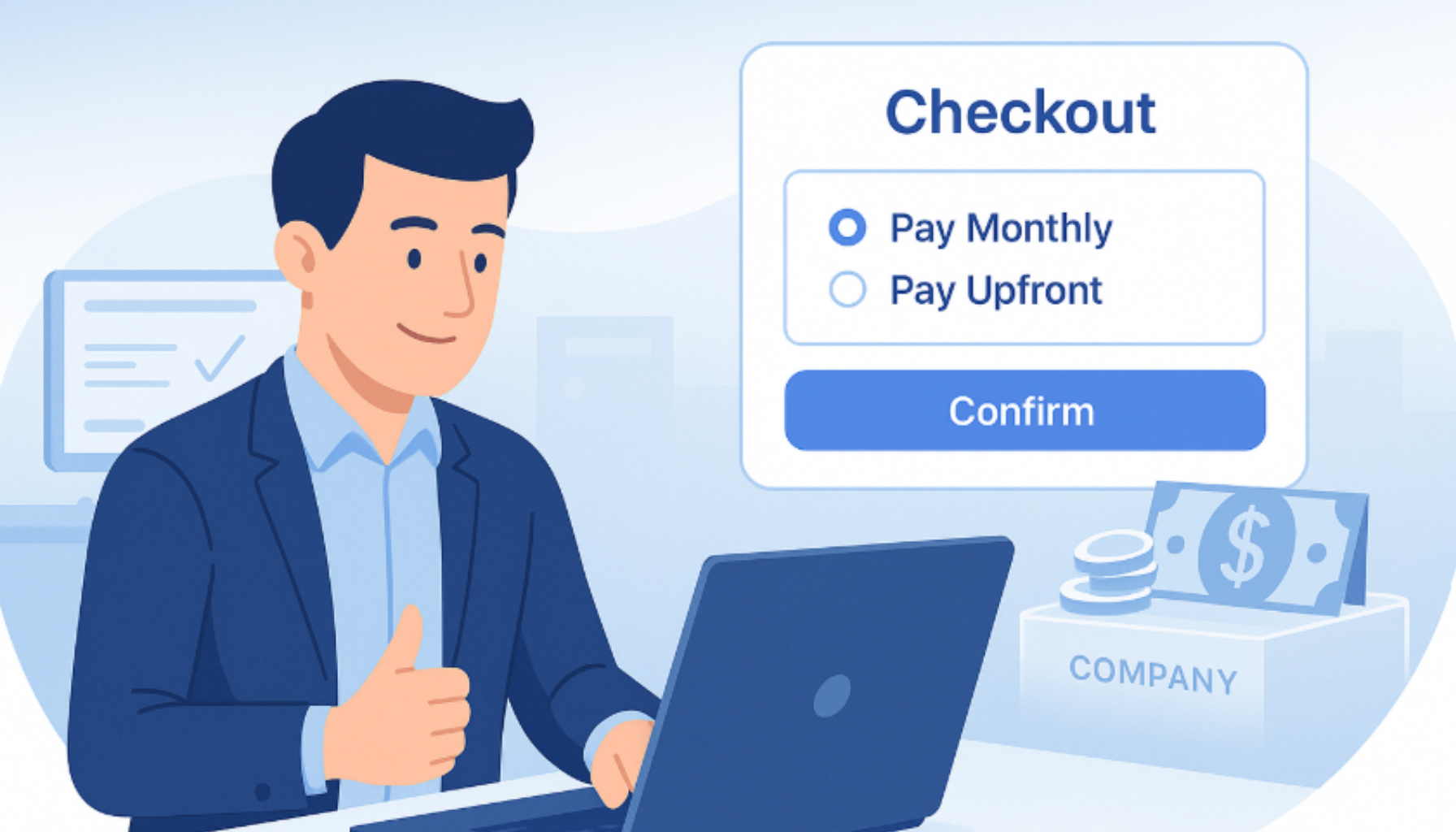Watch our Masterclass |
Reduce Cash Flow & Working Capital Issues Without Pissing Off Your Sales Team!
Recording Available

11 AM PT / 2 PM ET

Traditional SaaS billing delays cash, and raising another round or waiting on a bank isn’t always an option. This post breaks down five flexible financing options that help SaaS companies unlock upfront capital, offer payment terms to buyers, and scale without dilution, fixed repayments, or cash flow slowdowns. We’ll also explore why quote-to-cash with embedded financing is the most scalable option of all.

SaaS companies lose revenue when deals stall over payment friction. Embedded finance platforms let B2B companies offer flexible terms while collecting cash upfront, boosting conversions, removing discount pressure, and accelerating growth. This guide compares the top embedded finance platforms built for B2B SaaS in 2025 and how to choose the one that best fits your sales motion.
.png)
🚨 The Hidden Risk: SaaS sellers are quietly financing their buyers—and it’s draining their growth. To close deals, teams offer net terms, monthly billing, or deferred starts. Buyers get flexibility. But sellers? They deliver value now and wait —sometimes months—to get paid in full. It feels like sales enablement, but it’s something else: funding customer affordability out of your own cash flow. Without structure, it erodes margins, slows collections, and increases risk. 🕒 CAC payback stretches 💸 Discounts pile up 📉 Churn, defaults, and forecasting issues grow

Challenge: SaaS deals should be closing, but somehow they’re just... not. You’ve seen it happen: The demo lands. The buyer’s excited. Everything points to a quick close. Then... silence. Sure, sometimes buyers hesitate. But often, even motivated buyers get stuck — bogged down in finance approvals, rigid contracts, and inflexible payment terms. It’s the broken quote-to-cash (Q2C) process quietly killing deals that should have been won.
.png)
Challenge: Why Does Your SaaS Sales Process Feel Stuck? Sales reps spend just 30% of their time selling. The rest is lost to chasing approvals and tweaking quotes. Negotiations drag the sales cycles, demoralize the reps, and often lead to: ❌Lost deals ❌Unpredictable revenue ❌Cash flow problems The right CPQ simplifies quoting, streamlines approvals, aligns pricing with buyer expectations, and speeds up deal closures.
.png)
Billing mistakes don’t just hurt revenue. They hinder growth. 94% of B2B SaaS companies adjust pricing yearly, but most billing systems fail to align with new pricing. They cannot handle pricing changes, upgrades, and renewals without errors. This creates billing failures, revenue leakage, and customer churn.
.png)
The Challenge: Using a CPQ but not seeing the expected boost in deal closure rates and velocity. CPQ was meant to fix stalled deals. So why aren’t you closing more? You’ve optimized pricing, automated quotes, and streamlined approvals. But deals still get stuck. Not because of the quoting process but because of what happens after the quote is sent.
.png)
The Challenge: Why B2B SaaS Deals Are Stalling B2B SaaS sales cycles have never been longer—49% of deals over $20K now take four months or more to close. Why? Buyers demand flexibility, proof, and seamless processes. If you’re still relying on traditional sales tactics, you’re falling behind. Deals that once closed in weeks now stretch into months as decision-makers scrutinize every purchase, prioritize immediate ROI, and expect more than just polished demos.
.png)
What’s draining the cash flow from your SaaS business? It’s not just poor sales or runaway expenses—it’s the subscription model itself. Monthly plans keep your customers happy, but they leave you waiting far too long to collect the full value of a deal. Annual plans bring in cash faster, but only if you’re willing to slash prices with steep discounts—and even then, budget-conscious buyers might still walk away.
.png)
The economic downturn has hit businesses very hard. And economists say there's the threat of a global recession on the horizon. To survive, many companies are being forced to keep a tight lid on their budgets and limit upfront cash payments for tools. So, SaaS vendors are considering adopting financial solutions that help accommodate their customers' financial difficulties. This is important, especially for small and medium SaaS companies that lack the advantages—a competitive moat and massive marketing and sales teams—big companies have that enable them to insist on annual and multiyear subscriptions.